What's New
Displaying results 561 - 570 of 4913
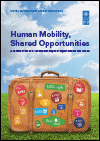
Resource | Publications,
The 2009 Human Development Report Overcoming Barriers: Human Mobility and Development, made the case that human mobility not only contributes to improving the lives of migrants and their families, but is a driver of development in countries of origin and destination. It also proposed a package of reforms to enhance the development gains of human mobility. Human Mobility, Shared Opportunities: A Review of the 2009 Human Development Report and the Way Ahead looks at new patterns of human mobility, reviews progress made on recommendations in the previous report, analyses emerging challenges and sets out next steps.
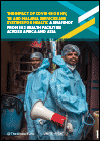
Resource | Publications,
A new report by the Global Fund to Fight AIDS, Tuberculosis and Malaria shows COVID-19 has massively disrupted health systems and health service delivery for HIV, TB and malaria in low- and middle-income countries in Africa and Asia in 2020. The report highlights the urgent need to scale up the adaptive measures that health facilities adopted to continue the fight against HIV, TB, malaria, to ramp up delivery of critical supplies for the COVID-19 response, and prevent health care systems and community responses from collapse.

Resource | Publications,
My Body is My Own - Claiming the right to autonomy and self-determination.
We have the inherent right to choose what we do with our body, to ensure its protection and care, to pursue its expression. The quality of our lives depends on it. In fact, our lives themselves depend on it.
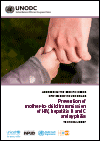
Resource | Publications,
This technical brief provides guidance for the provision of equitable, evidence-informed and human-rights-based services for prevention of mother-to-child transmission (PMTCT) of HIV, hepatitis B and C and syphilis among women who use drugs, and to support countries in their efforts towards elimination of mother-to-child transmission (EMTCT).
As a general principle, all pregnant and breastfeeding women who use drugs should have at least the same access to evidence-based services for PMTCT as women in other populations. Women should not be excluded from health care because of their substance use. All interventions should be voluntary, with informed consent and maintenance of confidentiality, including about a person’s drug use or HIV status.

Resource | Publications,
The 2021 high-level meeting will be the springboard for a decade of action to reduce inequalities and root out the social determinants that fuel the HIV epidemic. The high-level meeting comes at a historic moment for the AIDS response, 40 years after the emergence of the first cases of HIV and 25 years since the creation of UNAIDS. UNAIDS encourages the highest level of governmental participation in the 2021 high-level meeting and the full engagement of civil society and all other stakeholders through all channels, as agreed in the modalities of the high-level meeting.
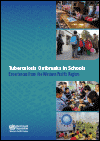
Resource | Publications,
This document summarizes current evidence on TB outbreaks in schools and contextualizes the information within the Western Pacific Region. Case studies from four countries highlighted the diverse range of experiences in the Region. As many countries have minimal experience in preventing and responding to TB outbreaks in schools, evidence from past outbreaks and case studies from a few countries could inform future responses.

Resource | Publications,
Intended for all stakeholders working towards universal health coverage (UHC) in sexual and reproductive health (SRH) services, this document accompanies the UHC Compendium of interventions, and serves as a guidance note to version 1.0 of the database. To enable easy access to all SRH related interventions in the UHC Compendium, this document collates them. It also gives a brief overview of the UHC Compendium website and initial steps to navigate it. This document will be updated alongside version 2.0 of the database.

Resource | Publications,
In 2020, Harm Reduction International found new ways to work together to advocate for the health, rights and dignity of people who use drugs, while ensuring that we used our expertise in tracking developments in harm reduction to map the impact of COVID-19 in our sector.
Most remarkably, amidst global upheaval, there have been significant gains in harm reduction and human rights. Communities and civil society have found new and innovative ways to reach people where they are at, creating important momentum for the permanent acceptance of health interventions which centre human dignity, agency and lived experience. Through the challenges of our diverse global experiences of lockdown, people who use drugs have led with courage and compassion, demonstrating the case for community leadership – yet again.
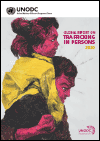
Resource | Publications,
The report comes at a time when global suffering has vastly increased vulnerabilities to trafficking. Extreme poverty is expected to rise for the first time in decades, with the continuing COVID-19 crisis casting a long shadow over our societies and economies. With many millions more women, men and children in every part of the world out of school, out of work, without social support and facing diminished prospects, targeted action is urgently needed to stop crimes like trafficking in persons from adding to the pandemic’s toll.
The report draws on data from 148 countries and explores issues of particular relevance in the current crisis, including the impact of socio-economic factors, drivers of child trafficking and trafficking for forced labour, and traffickers’ use of the internet.

Resource | Publications,
Harm Reduction International has monitored the use of the death penalty for drug offences worldwide since our first ground-breaking publication on this issue in 2007. This report, our tenth on the subject, continues our work of providing regular updates on legislative, policy and practical developments related to the use of capital punishment for drug offences, a practice which is a clear violation of international law.
The Global Overview 2020 provides an analysis of key developments related to the death penalty for drug offences in 2020, their potential medium- term and long-term consequences, and the influence of COVID-19 on these changes. It will also examine the impact of measures introduced in response to COVID-19 on the right to a fair trial. A special section at the end of the report provides a review of best practices identified by lawyers for advocating against the death penalty at the national level.





